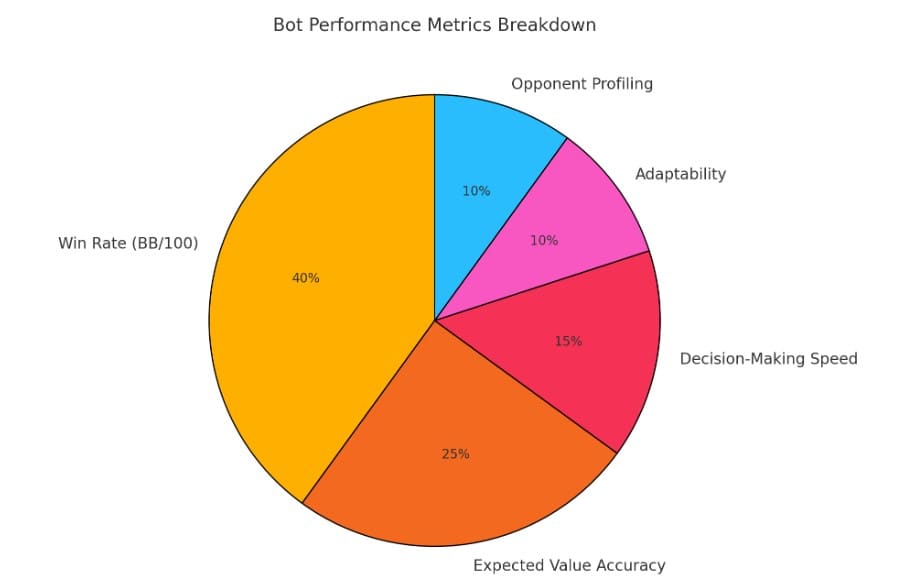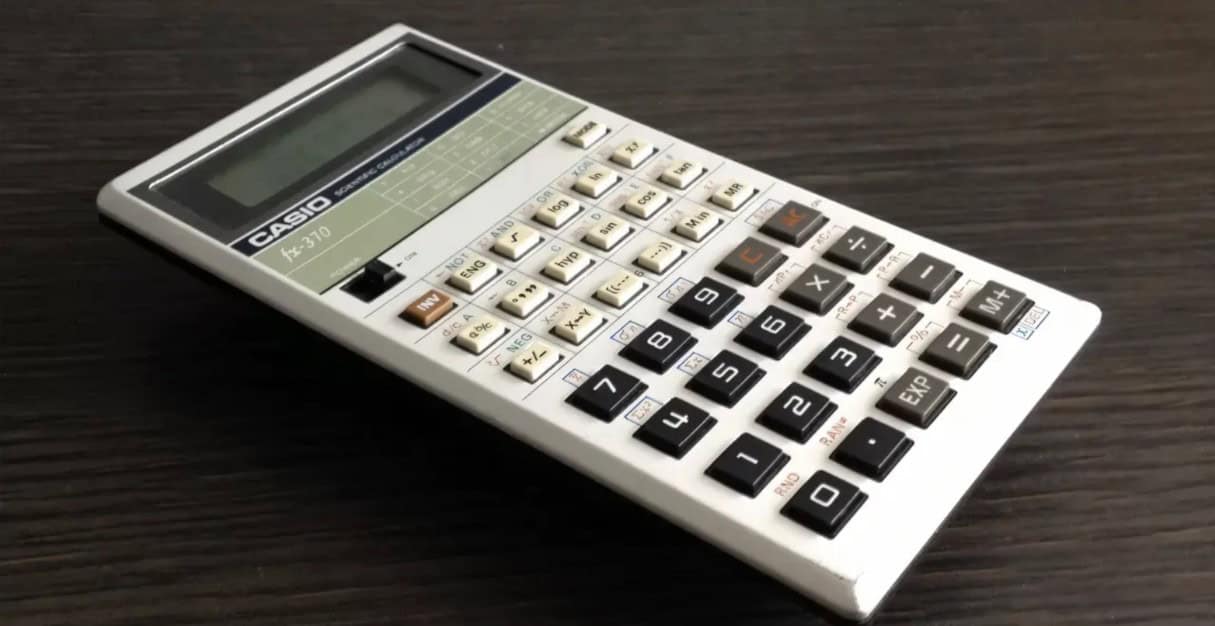
How to evaluate poker bot strategy and success
From simple scripts, poker bots have now grown into complicated creations of artificial intelligence that even beat professionals. But how could you really tell if a poker bot is doing well? Success here is not counted by the number of wins but understood by strategy execution, the accuracy of any decision made, and in the long-term profitability.
In this article, we’ll explore the key metrics and evaluation methods that determine a poker bot’s effectiveness. Whether you’re developing a bot, using one for training, or just curious about how these digital players dominate the game, understanding these performance indicators is crucial.
What is a successful poker bot?
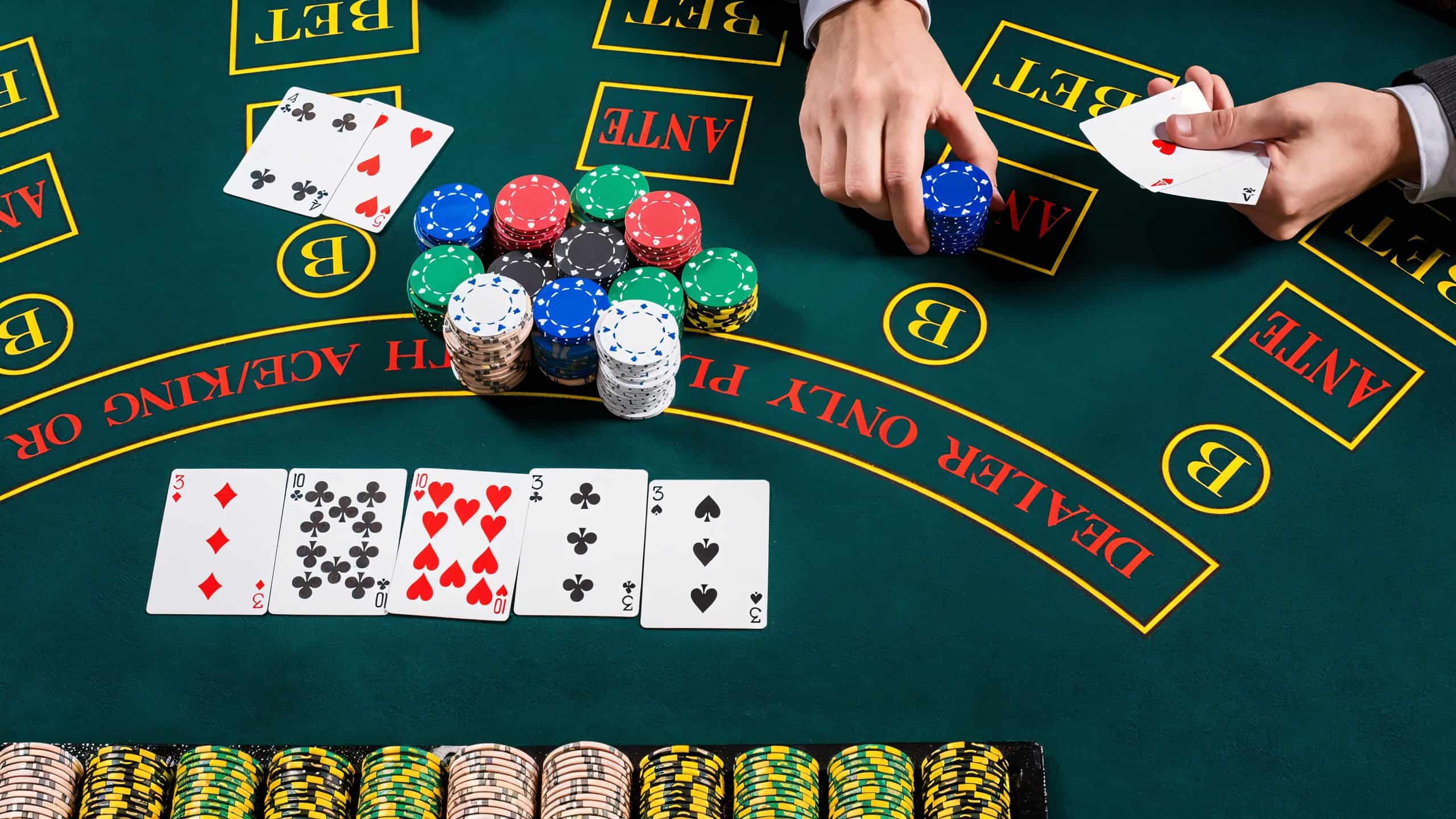
A successful poker bot isn’t one that wins each and every game. The best of them-there will be real variance-meaning they do lose hands. Success in that regard thus pertains to long-term profitability, adaptive decision-making, and an ability to execute the right strategy every hand.
In poker, to win means making continuously profitable decisions, whatever the outcome might be. That’s just where poker bots excel: They work on a mathematical basis and therefore cannot make emotional mistakes-like tilt, revenge plays, or impatience-that’s what makes them very good performers in the long run.
Key performance measurement indicators of Poker bot
1. Win Rate (BB/100)
- Definition: Number of big blinds won per 100 hands.
- Why it matters: That is the gold standard of all poker performance metrics. The larger your BB/100, the better is your consistency in profitability.
Example:
- Recreational players: 1-3 BB/100
- Good human players: 5-8 BB/100
- Top players/ bots: 10+BB/100
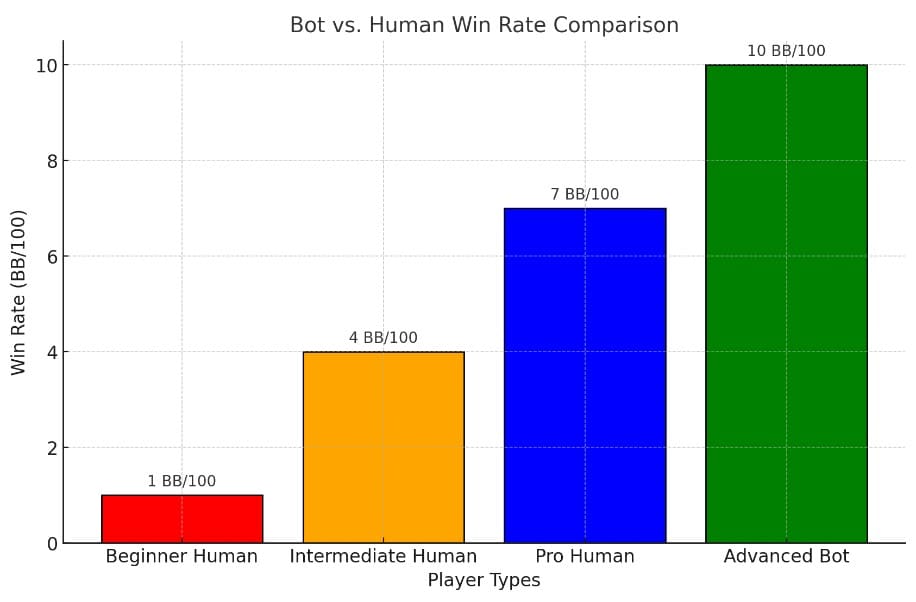
That would come out to the above 8 BB/100 over 50,000 hands, which is professional level performance.
2. Expected Value (EV) accuracy
- Definition: How well or poorly a bot can calculate and optimize its EV for any given decision.
- Why it matters: Long-term optimal outcome from EV-based play irrespective of short-term variance.
Example: A bot certain to raise with any EV+ hand, even in less-than-perfect conditions, is better long-term than one taking only the safe low EV plays.
3. Decision-making speed
- Speed with which the bot chooses its move.
- Why it matters: Fast decisions in multi-table online games result in more profitability because there are more hands per hour.
Example: The better these are at processing their decision-making in milliseconds, therefore they may play many tables at anyone time.
4. Flexibility
- Definition: The eligibility of the strategy adjustment of a bot playing with different opponents.
- Why it matters: Poker is not a stationary game. A strong bot will change its play to aggressive, tight, and capricious adversaries.
This would be a strong indication that a bot systematically finds an opponent folding to river bluffs and therefore should bluff more.
5. Accuracy of grip strength analysis
- Definition: Correctly gauging hand strength against opponents’ ranges.
- Why it matters: Accurately valuing hand strength will improve your betting, improve your calling, and improve your folding.
6. Opponent modelling
- Changing it because it follows what the opponents do.
- Why it matters: Profiling by opponent bots can then target the weak and defend against the most aggressive.
How to Test and Evaluate a Poker Bot
One doesn’t just stop at creating a strong bot but actually needs to test it under real conditions. Testing poker bots-how developers and researchers do it-is shown below.
1. Virtual environments
- Run the bot in an artificially controlled environment of regular poker simulations.
- Goal: Test strategic execution without real-money risk.
2. Greater sample size
- Minimum hands played: at least 100 000+ Hands played for variance reasons.
- Why it matters: Luck in poker evens out over larger sample size.
3. Bot to play against another bot
- Play against different poker bots to check the level of your skills.
- The idea is to show the bot’s performance on the competing skill.
4. Cash Game
- Deploy the bot to play real-money online poker within the rules set by the playing platform.
- Why it matters: Real-money games represent the acid test of profitability and strategic execution.
5. Performance graphs, and reports
- View bot game history with the help of one of the tracking software: PokerTracker, Hold’em Manager, etc.
- Focus on: win rate, EV difference, and graphs of positional performance.
Avoiding common evaluation mistakes
Even professional bot developers commit these assessment fallacies:
- Variance ignition: The earlier evaluation may give wrong results as poker has innate gambling.
- Overfitting strategies: Programming the bot for specific situations, without game variety.
- Not judging short-term success: A few big pots won’t ensure that your strategy is great; instead, look into the long-term win rates.
AI-Improving Performance of Poker Bots.
Following is how AI does this by installing advanced machine learning algorithms and neural networks in today’s poker bots to realize improvements.
1. Data-driven learning: The results from just-played games allowed the bots to do some adjustments and modifications to the moves.
2. Identify opponent pattern: These AI bots segregate the betting pattern, tendencies, and bluffing frequencies to exploit humans rather well.
3. GTO (Game Theory Optimal) strategy updates: The best bots are those using GTO solvers to make always mathematically optimal decisions.
When is a poker bot considered successful?
A bot shall be said to work when it has the following:
- Positive win rate: It is at least 10+ BB/100 over 100,000 hands.
- Making all EV-Optimal moves: Continuing to make plays which increase expected value.
- Adaptive to opponents: it can adapt dynamically against different playstyles.
- Outperforms humans: Wins against skilled human opponents in various formats.
Conclusion: measuring success in poker bots
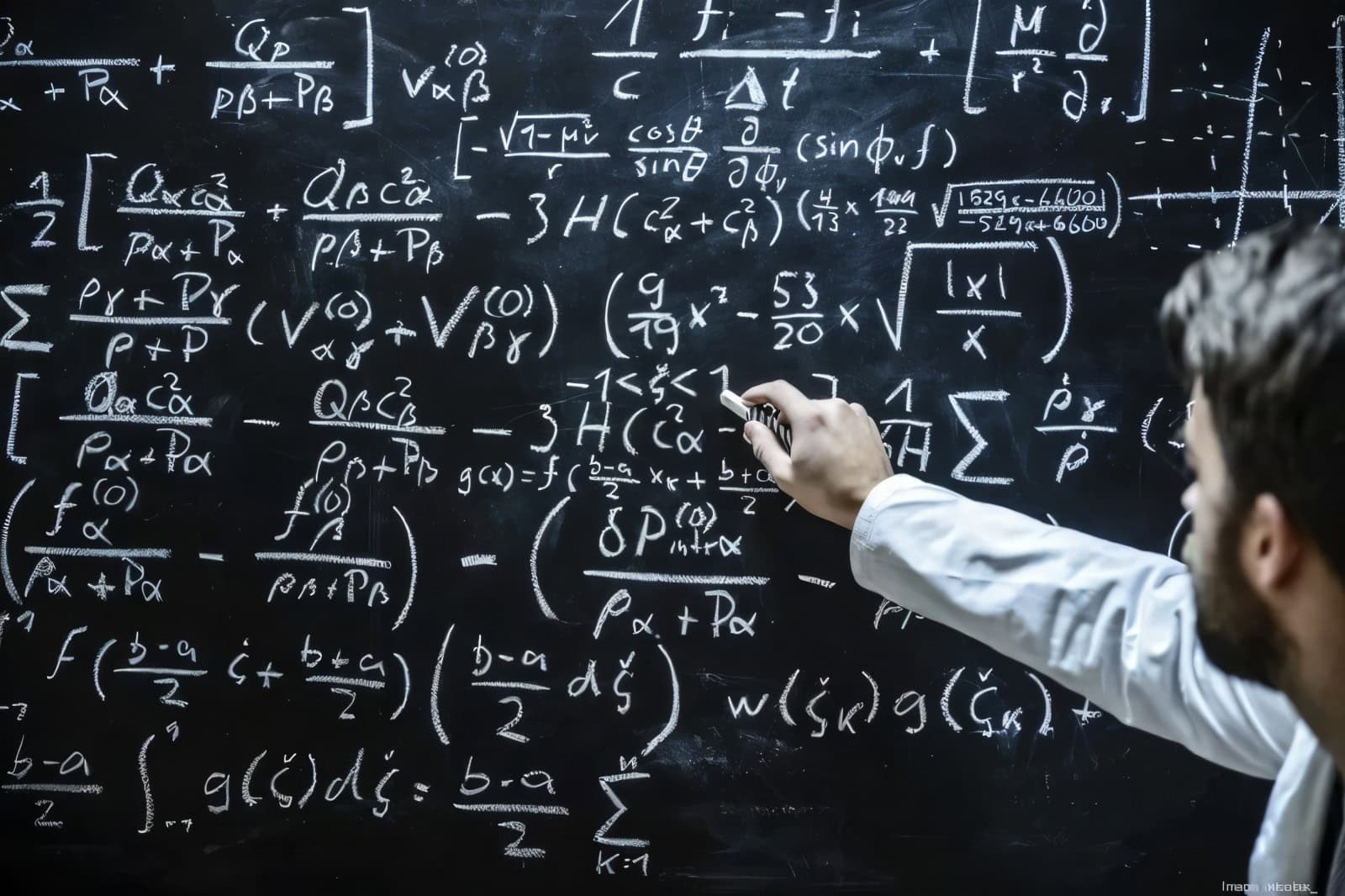
The performance appraisal of a poker bot does not lie in winning hands but in making the right decision over the long term. The test to any bot quality of operation in any given poker environment integrates win rate, precision of expected value, adaptability, and speed of decisions.
Knowing what metrics actually matter will help one sift some hype from the actual strategic success-be it building his or her own bot, investing in a commercial system, or simply being interested in poker AI.

